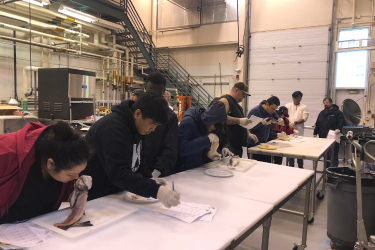As part of its efforts to support coastal communities looking to build more resilient futures, NOAA today announced the funding of a $23.7 million award for the construction of the Oyster Bayou Marsh Restoration project.
The project will be funded through the Coastal Wetlands Planning, Protection and Restoration Act (CWPPRA) Program, which has restored and protected more than 112,000 acres of coastal habitat in Louisiana in the past 25 years.
“This is a win-win investment by NOAA and the local community because this project will help restore the natural systems that protect the coastline from storms and floods, as well as support healthy, sustainable fisheries,” said Eileen Sobeck, assistant NOAA administrator for fisheries.
This project will contribute to the resilience of the coastal ecosystems and communities near Lake Charles, Louisiana, by restoring the wetlands at the mouth of the Calcasieu River that have been converted to open water due to Hurricanes Rita and Ike. This project will restore approximately 600 acres of salt marsh at the mouth of the river by dredging sediments from just offshore.
Louisiana’s coastal wetlands are the state’s first line of defense during storms—reducing the effects of wind, waves, and flooding. They also provide habitat for fish, shrimp, birds, and other wildlife. Hurricanes and coastal storms create long-term impacts to the fragile wetlands-dominated coastal zone of Louisiana, threatening communities and the coastal economy, including a statewide seafood industry valued at approximately $1 billion annually.
“This type of NOAA service, or environmental intelligence, helps decision makers assess and understand the risks of coastal hazards, sea-level rise, and long-term change, and it helps them focus resilience dollars and efforts that work best for their coastal communities,” said Sobeck.

